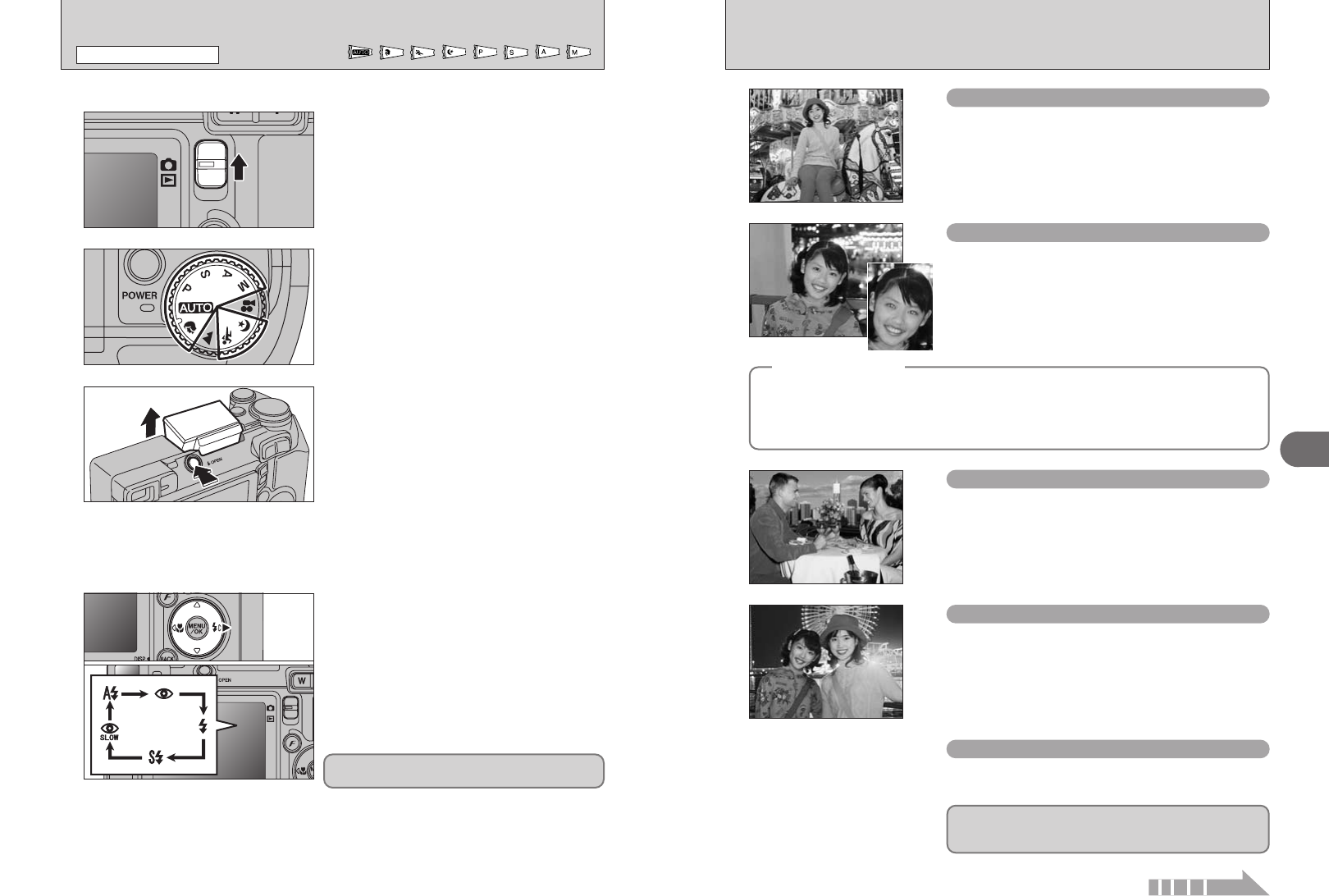
39
Advanced Features
3
The flash setting changes each time you press the
“d (c)” Flash button. The last flash mode shown is
the mode selected.
●
!
If the flash is used in dusty conditions or when it is snowing,
white dots may appear in the image due to flash reflecting off
the dust particles or snowflakes. Use Suppressed flash
mode.
●
!
When taking a picture using the flash, the image may
disappear and go dark as the flash charges. The viewfinder
lamp then blinks orange.
●
!
The available flash modes are limited depending on the
Photography menu selected (➡P.31).
x Auto flash
Use this mode for ordinary photography. The flash fires as
required by the shooting conditions.
●
!
If pressing the shutter button while the flash is charging, the picture will
be taken without the flash.
b
Red-eye reduction
Use this mode to make sure that the subject’s eyes appear
normal when taking pictures of people in low-light
conditions. The flash fires a pre-flash just before the picture
is taken and then fires again to take the actual picture. The
flash fires as required by the shooting conditions.
●
!
If pressing the shutter button while the flash is charging, the picture will
be taken without the flash.
4
Press the shutter button down halfway. “∑”
appears on the LCD monitor when the flash is used.
38
d FLASH
PHOTOGRAPHY FUNCTIONS
Choose from 6 flash modes according to the type of shot.
1
Set the Mode switch to “q”.
2
Set the Mode dial to “B”, “m”, “.”, “/”, “N”,
“M”, “<”, or “>” mode.
3
Press the Flash pop-up button to pop-up the flash.
h Effective flash range (
B)
Wide-angle: approx. 0.6 m to 4.1 m
(2.0 ft. to 13.5 ft.)
Telephoto: approx. 0.6 m to 2.0 m
(2.0 ft. to 6.6 ft.)
●
!
If the shutter speed is set to a speed faster than 1/1000 sec.,
the image may appear dark even if the flash is used.
●
!
When the flash pops up, the image may disappear and go
dark briefly due to flash charging. The viewfinder lamp blinks
orange during charging.
Available Photography mode:
d
Forced flash
Use this mode in backlit scenes, such as a subject against
a window or in the shade of a tree, or to get the correct
colors when taking a picture under bright lighting. In this
mode, the flash fires in bright as well as dark conditions.
c
Slow synchro
This is a flash mode that uses a slow shutter speed. This
allows you to take pictures of people at night that clearly
show both your subjects and the night time backdrop. To
avoid camera shake, always use a tripod.
h Slowest shutter speed
“
/” Night scene: up to 2 sec.
n
Red-eye reduction + Slow synchro
Use this mode for Slow synchro shots with Red-eye reduction.
●
!
The image may be overexposed when shooting bright scenes.
To take a picture of a main subject at night with the
background brightly lit, use the “
/” (Night scene) setting in
Photography mode (➡P.32).
◆
Red-eye effect
◆
When using the flash to take a picture of people in low-light conditions, their eyes sometimes
appear red in the picture. This is caused by the light of the flash reflecting off the inside of the eye.
Use Red-eye reduction flash to minimize the likelihood of this effect.
Take the following measures to make Red-eye reduction more effective:
h Get the subjects to look at the camera. h Get as close as possible to the subjects.
Continued


















